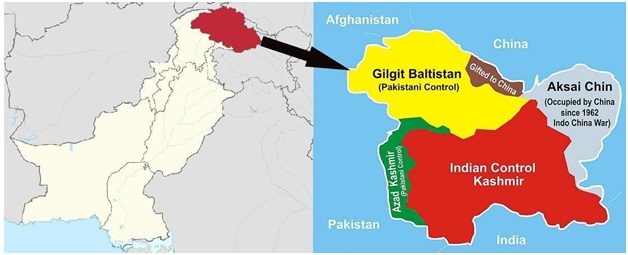Context
Pakistan’s Law and Justice Ministry has finalisedthe draft legislation to incorporate Gilgit-Baltistan, which was known before 2009 as Northern Areas, as a province of the country.
About the Gilgit-Baltistan
- India asserts that Gilgit-Baltistan is an integral part of India “by virtue of the legal, complete and irrevocable accession of Jammu & Kashmir to the Union of India in 1947”.
- The area’s strategic importance has increased in light of the China-Pakistan Economic Corridor agreement.
History of the region
- Gilgit was the part of princely state of Jammu & Kashmir, but was ruled by the British, who took it on lease from Hari Singh, the Hindu ruler of the Muslim-majority state.
- When Hari Singh acceded to India on October 26, 1947, the Gilgit Scouts rose in rebellion, led by British commander Major William Alexander Brown.
- The Gilgit Scouts also moved to take over Baltistanand captured Skardu, Kargil and Dras. In battles, Indian forces retook Kargil and Dras in August 1948.
- On November 1, 1947, a political outfit called the Revolutionary Council of Gilgit-Baltistan had proclaimed the independent state of Gilgit-Baltistan.
- On November 15, it declared it was acceding to Pakistan, which accepted the accession only to the extent of full administrative control, choosing to govern it directly under the Frontier Crimes Regulation, a law devised by the British to keep control of the restive tribal areas of the northwest.
- In 1949, Pakistan entered into an agreement with the “provisional government” of “Azad Jammu & Kashmir” to take over its defence and foreign affairs. Under this agreement, the “AJK” government also ceded administration of the Gilgit-Baltistan to Pakistan.

Reason behind the move
- The change in status will meet a long-standing demand of the 1.5 million people of Gilgit-Baltistan.
- Another suggested reasons is that Pakistan’s decision is under pressure from China, wary that Gilgit-Baltistan’s ambiguous status might undermine the legality of its projects there.
